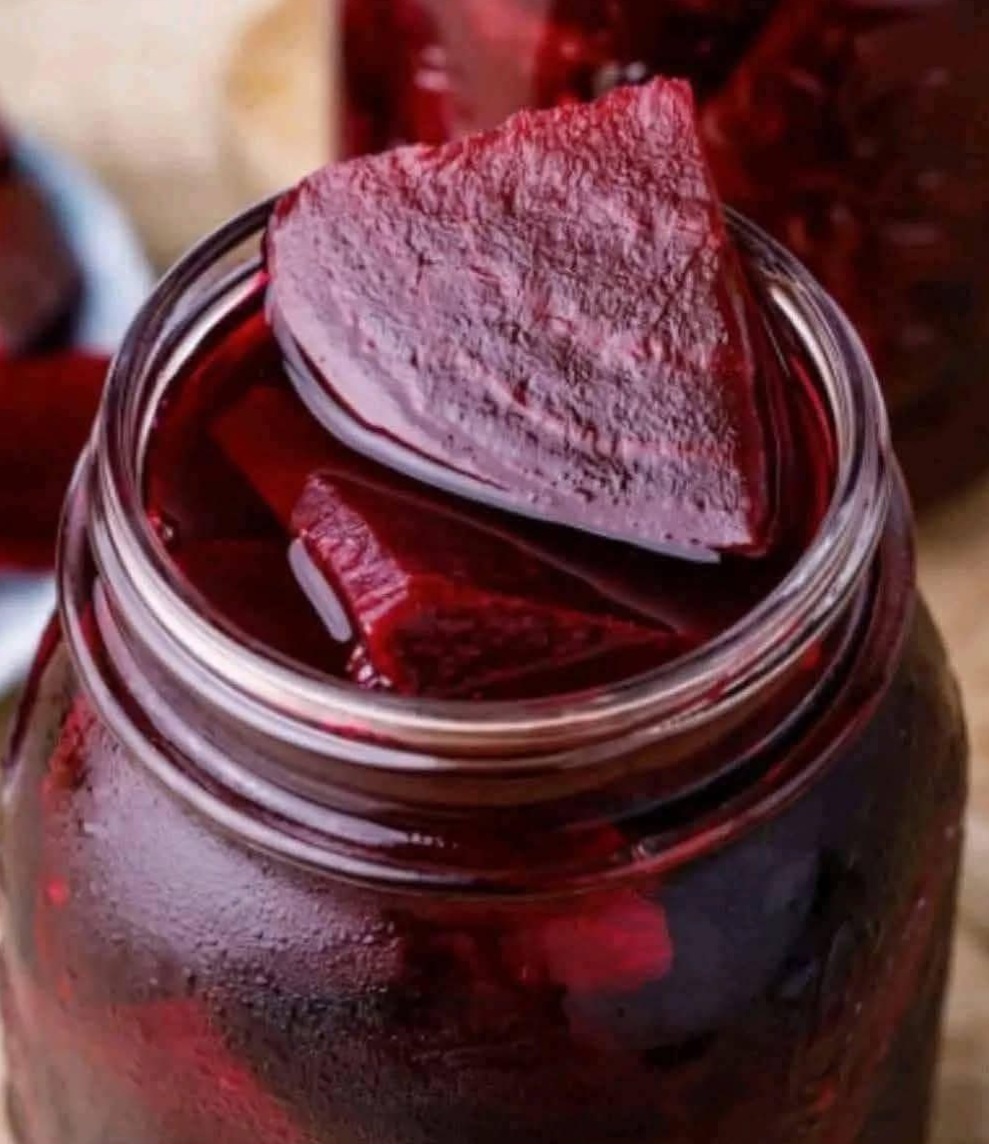Pickled Beets
Introduction
Pickled beets are a classic, vibrant, and tangy preserve enjoyed around the world. Their deep ruby color, earthy sweetness, and bright acidity make them a timeless favorite for salads, sandwiches, charcuterie boards, or simply snacking straight from the jar. This simple recipe transforms humble fresh beets into a flavorful treat that stays delicious for weeks.
Ingredients & Quantity
For the Pickled Beets
8 medium fresh beets
1 cup vinegar (white vinegar or apple cider vinegar)
1 cup water
½ cup sugar (adjust to taste)
1 teaspoon salt
2 cloves garlic (optional)
4 whole cloves (optional)
1 cinnamon stick (optional)
Instructions
1. Prepare the Beets:
Wash the beets thoroughly, leaving the skin on.
Place them in a pot and cover with water.
Boil for 30–45 minutes, or until they are fork-tender.
2. Peel and Slice:
Drain and let the beets cool slightly.
Rub off the skins with your hands— they should slide off easily.
Slice or cube the beets based on your preference.
3. Make the Pickling Brine:
In a saucepan, combine vinegar, water, sugar, and salt.
Add optional garlic, cloves, or cinnamon if desired.
Bring to a simmer until the sugar dissolves.
4. Pack the Jars:
Place the sliced or cubed beets into clean jars.
Pour the hot brine over the beets, covering them completely.
5. Seal and Refrigerate:
Allow jars to cool, seal with lids, and refrigerate for at least 24 hours before eating for best flavor.
Pickled beets keep for 2–4 weeks in the refrigerator.
Origin and Cultural Significance
Pickled beets have roots across Europe, particularly in Eastern European, Scandinavian, and British cuisines. They were traditionally prepared as a way to preserve the beet harvest through winter. In many cultures, pickled vegetables—especially beets—symbolize resourcefulness and seasonal cooking. Today, they remain a staple side dish in Nordic meals, American Southern cuisine, and various Middle Eastern salads.
Description
These pickled beets are a delightful balance of earthy sweetness and bright tanginess. Their jewel-tone color makes them visually stunning, while the lightly spiced brine adds depth and aromatic warmth. With a tender texture and refreshing flavor, they complement everything from hearty meats to crisp salads.
Optional Additions
Enhance your pickled beets with:
Red onion slices for extra sweetness
Bay leaf for subtle herbal flavor
Mustard seeds for a hint of spice
Orange peel for citrus brightness
Fresh dill added after pickling for freshness
Peppercorns for mild heat
Tips for Success
Choose firm, smooth beets for the best flavor.
Wear gloves when peeling to avoid staining your hands.
Letting the beets marinate for 48 hours results in deeper flavor.
Sterilize jars if you plan to store them longer term.
Balance is key—adjust sugar and vinegar to your preferred tanginess.
Nutritional Information (Approx. per ½ cup)
Calories: 70–90
Carbohydrates: 15–20g
Sugar: 10–15g
Fiber: 2–3g
Vitamin C: 4–6% DV
Folate: High, naturally present in beets
Fat: 0g
(Varies slightly with sugar and vinegar used.)
Conclusion
Pickled beets are a simple yet rewarding recipe that turns ordinary beets into something special. Whether enjoyed as a side dish, topping, or snack, they add color and brightness to any meal.
Recommendation
Serve your pickled beets with roast meats, leafy green salads, grain bowls, or creamy cheeses. They also make an excellent addition to meal prep and festive holiday spreads.
Embracing Healthful Indulgence
This recipe is proof that delicious food can also be nourishing. Beets are naturally rich in antioxidants, fiber, and essential nutrients, while the pickling process brings out their sweetness with minimal added ingredients. Enjoy them as a wholesome, flavorful indulgence that supports both taste and well-being.
